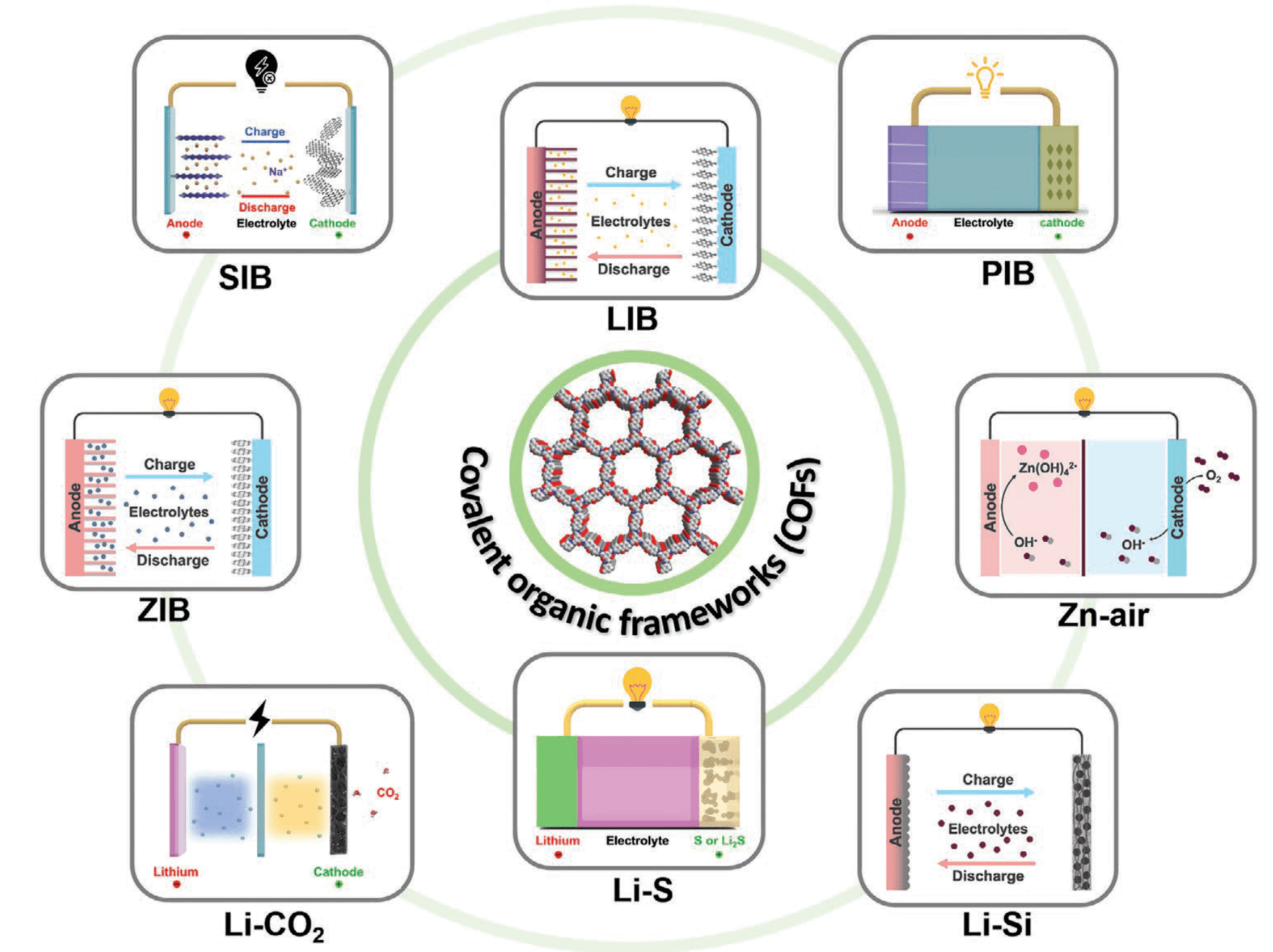
Covalent organic frameworks (COFs) have emerged as an exciting new class of porous materials constructed by organic building blocks via dynamic covalent bonds. They have been extensively explored as potentially superior candidates for electrode materials, electrolytes, and separators, due to their tunable chemistry, tailorable structures, and well-defined pores. These features enable rational design of targeted functionalities, facilitate the penetration of electrolytes, and enhance ion transport. This review provides an in-depth summary of the recent progress in the development of COFs for diverse battery applications, including lithium-ion, lithium–sulfur, sodium-ion, potassium-ion, lithium–CO2, zinc-ion, zinc–air batteries, etc.
read more